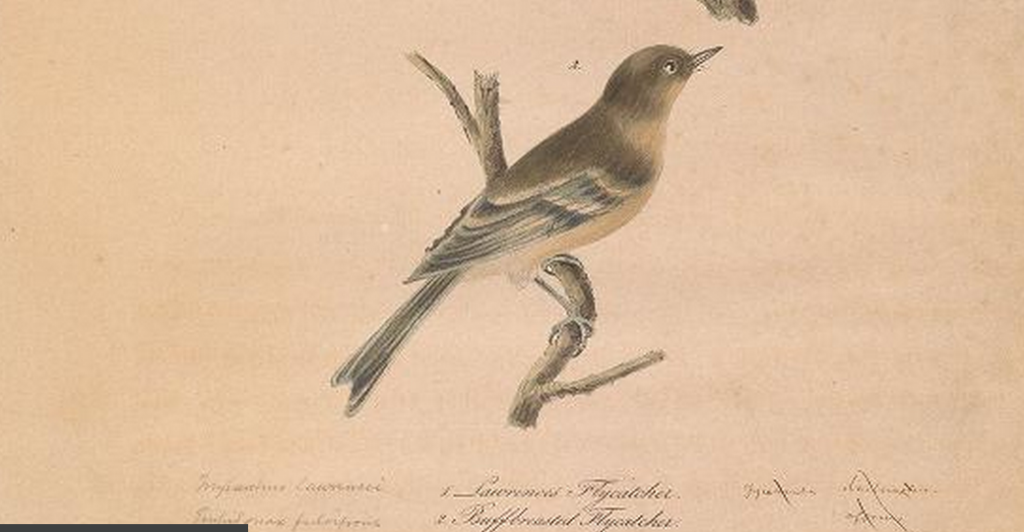One hundred fifty years ago today, on May 29, 1865, Elliott Coues wrote to the editor of the Ibis from his posting at Fort Whipple, near Prescott, Arizona.
It’s a delightful letter, humorous and good-natured, the source of the famous Couesian line about feeling “a sort of charitable pity for the rest of the poor world, who are not ornithologists, and have not the chance of pursuing the science in Arizona.”
Coues reports on the habits of the avian inhabitants of northern Arizona’s pine forests, then tentatively reports an apparent novum,
another new one among the host of [difficult] Empidonaces … already on record …. nothing like any northern one. It is considerably smaller than E. minimus — a veritable little pygmy, so that I thought it was a Regulus [kinglet] when I shot at it…. I have distinguished it in my notes and letters as E. pygmaeus.
This turns out to be the first record of the buff-breasted flycatcher from Arizona, and the type description of the subspecies pygmaeus (which Coues later attempted to rename pallescens).
Coues was right, though, in wondering whether the bird might not have been described before: J.P. Giraud had in fact named the bird in 1841, describing it from a specimen said to be from Texas but most likely from somewhere south of the United States. Giraud called it the “buff breasted fly catcher, Muscicapa fulvifrons,” the names it still — mutating the mutanda — bears.
The great historical curiosity attending this species is that it does not occur with any regularity in either of its type localities: there are hardly ten records of the bird in Texas, and in Arizona this sweetest-faced of the Empidonax no longer ranges north to anywhere near Prescott.
Coues’s Fort Whipple pygmies were more special even than he suspected.


